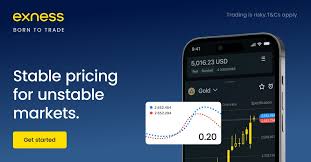
Mastering the Art of Trading: Exness Scalping Strategy
The Exness Scalping Strategy Exness Qatar Scalping Strategy is a powerful technique used by traders to capture small price movements in the market. By executing numerous trades within a short time frame, scalpers can accumulate profits that can sum up to a significant amount by the end of the trading day. This article will delve into the essentials of the Exness Scalping Strategy, its advantages, potential drawbacks, and effective tips for successful implementation.
What is Scalping?
Scalping is a trading strategy that involves making numerous trades throughout the day to exploit small price fluctuations. Traders, known as scalpers, establish positions within seconds or minutes and aim to close them quickly to make a profit. Due to the fast-paced nature of this strategy, it requires quick decision-making, a solid understanding of the market, and sometimes, reliance on automated trading tools.
Understanding the Exness Platform for Scalping
Exness is a popular trading platform that offers a range of tools and resources that are ideal for scalpers. With its reliable spreads, fast execution times, and robust features, Exness provides an environment conducive to high-frequency trading. The platform supports various trading instruments, including forex, commodities, and cryptocurrencies, allowing scalpers to diversify their trading portfolios effortlessly.
Key Features of Exness for Scalping
- Low Spreads: Exness offers some of the lowest spreads in the industry, which is crucial for scalpers seeking to capitalize on small price movements.
- Execution Speed: Fast order execution ensures that trades are completed quickly, allowing scalpers to enter and exit positions without delay.
- Leverage Options: Exness provides high leverage options, enabling traders to control larger positions with a smaller amount of capital.
- User-Friendly Interface: The platform is designed to facilitate easy navigation and efficient trade management, making it suitable for both novice and experienced traders.
Implementing the Exness Scalping Strategy
When employing a scalping strategy on the Exness platform, there are several key practices to ensure successful execution:

1. Choose the Right Currency Pairs
Scalpers should focus on highly liquid currency pairs with tight spreads, such as EUR/USD, USD/JPY, or GBP/USD. These pairs tend to have stable price actions which make them ideal for capturing small movements effectively.
2. Use Technical Analysis
Scalpers often rely on technical indicators to make trading decisions. Common tools include moving averages, Bollinger Bands, and Relative Strength Index (RSI). Analyzing price charts and identifying patterns can help scalpers determine entry and exit points.
3. Set Clear Entry and Exit Rules
Having well-defined rules for entering and exiting trades is critical. Scalpers should establish profit targets and stop-loss levels before executing trades to manage their risk effectively. This helps in minimizing losses and locking in profits when the price moves favorably.
4. Stay Updated on Market News
Economic news releases can cause significant price movements, making it essential for scalpers to be aware of scheduled events. Traders should keep an economic calendar close and avoid trading during major news releases unless they have a particular strategy in place.
Managing Risk in Scalping
Risk management is vital in any trading strategy, especially in scalping where the rapid pace can lead to quick losses. Here are a few tips to manage risk effectively:

1. Utilize Stop-Loss Orders
Always set stop-loss orders to limit losses on each trade. This ensures that a losing trade does not diminish overall capital significantly.
2. Use a Proper Position Size
Determining the appropriate position size based on account balance and risk tolerance is paramount. Scalpers should trade a small percentage of their account balance to reduce the risk of substantial losses.
3. Maintain a Disciplined Approach
A disciplined trading approach is crucial. Scalpers should avoid emotional trading and stick to their pre-planned strategies, regardless of market sentiment.
Evaluating Success with the Exness Scalping Strategy
Success in scalping is not solely defined by the number of winning trades but also involves evaluating overall profit and loss. Key performance indicators (KPIs) to consider include:
- Win Rate: The percentage of profitable trades over a period.
- Risk-to-Reward Ratio: Comparing potential profits to the risks taken on trades.
- Consistency: The ability to replicate successful trades over time, maintaining a steady profit flow.
Conclusion
The Exness Scalping Strategy offers traders a unique opportunity to maximize profits through fast-paced transactions. By leveraging the strong features of the Exness platform, adhering to disciplined trading practices, and implementing effective risk management techniques, aspiring scalpers can significantly increase their chances of success. As with any trading strategy, continuous learning and adaptation to market changes are key to thriving in the dynamic world of forex trading.
